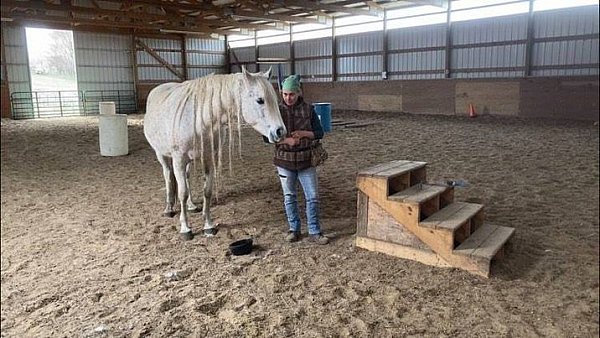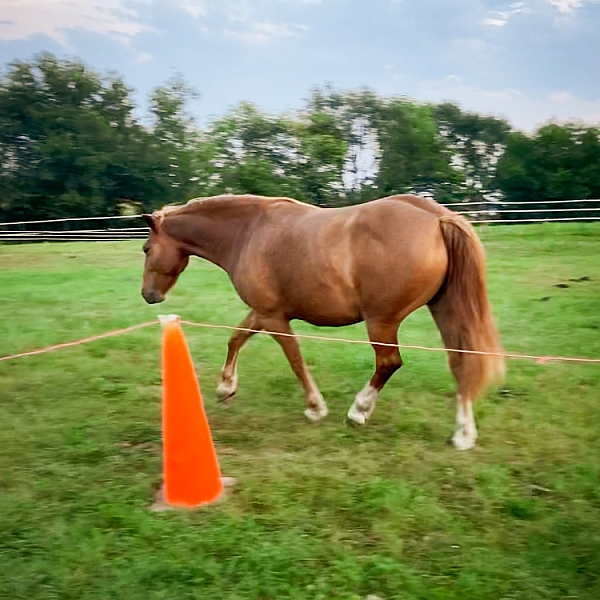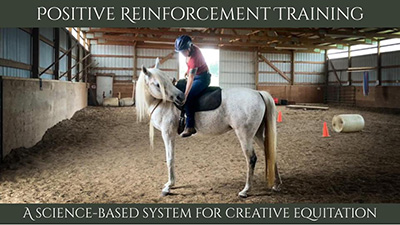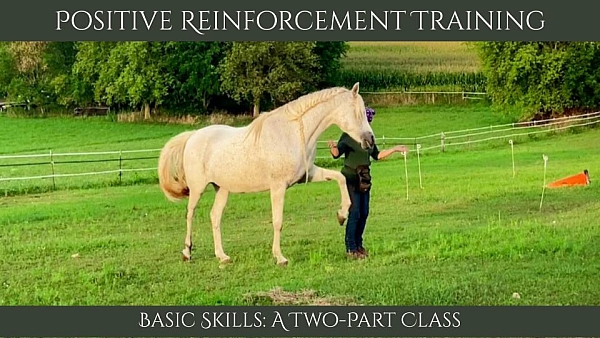groundwork
In nearly everything we do with horses, we either want them to stand still, or move. The first groundwork skill to teach the horse is to stand still and face forward. This skill also establishes a common language between horse and handler which is the foundation for all other training.
The second skill is to touch and/or follow a target. This is the basic "unit" of groundwork. Once a horse knows what a target is and what to do with it, you have another layer of communication and possibility.
By making the skills fluent, you can train everything on the ground that will also prepare your horse for riding work. You also have options in emergencies when training may not be possible.
The more creative you can be about your training, the more likely it is you will progress somewhat quickly. Not only will your observational skills and your feel for your horse develop, but you’ll start to see your horse’s patterns in more detail, and you’ll find ways you can change one small thing and get a different result.
stand still & face forward
This is the first skill taught to all horses. It's a "default" skill: when it's trained well enough, it's the thing your horse is likely to do in any situation in which they aren't sure what to do.
targeting
The target directs a horse’s attention. It’s used to show the horse how and where to position themselves. It's used for behaviors like lining up at the mounting block, where to station (stand and wait) for things like grooming, moving the whole horse, or moving specific body parts like legs or head/neck.
A to B
The "A to B" concept puts two or more targets together, creating a path for a horse to follow. It's used for getting from one side of a jump to the other, loading into a trailer, and many other more movement-based behaviors.
Reverse round pen
The reverse round pen works like round pen work or lunging, but the horse is on the outside of the pen. This allows the horse the choice to work freely, or leave if they choose. It allows the handler to work at more of a distance, and also keeps them safe from enthusiastic horses.
Want to know more?
Here is a little e-book I wrote on starting positive reinforcement training (click HERE to download). It's free, with no strings attached. It's everything I like new clients to know when considering working with me. I'm happy to answer questions!
Want to try it, with no pressure?
This is a class demonstrating two basic skills, using positive reinforcement training, that can be used to teach nearly any behavior, from standing still for husbandry work to movement-based behaviors. After watching the video, you're invited to send me a short video of you working with your horse. We can then go over the video and you can ask questions or get advice.
Do you have questions?
While there’s a structure to learning and to positive reinforcement, there’s no single path to success. Every horse is different, and a lot of horses (and people!) are different on different days. Let me help you make a fun, flexible training plan that celebrates your and your horse’s individuality.
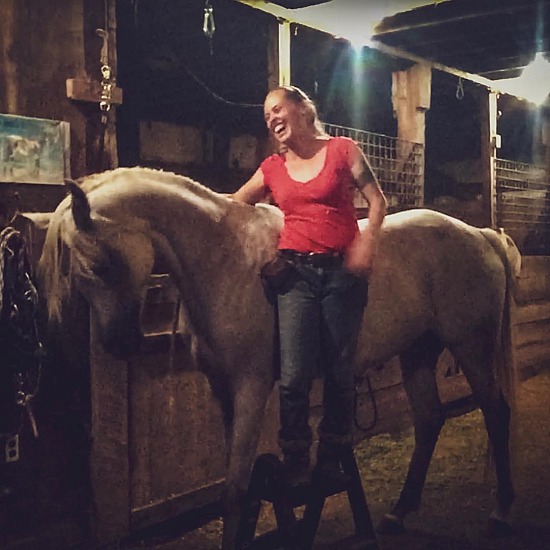
Heather K McManamy
South Central WI
Text welcome at 608-333-6950

